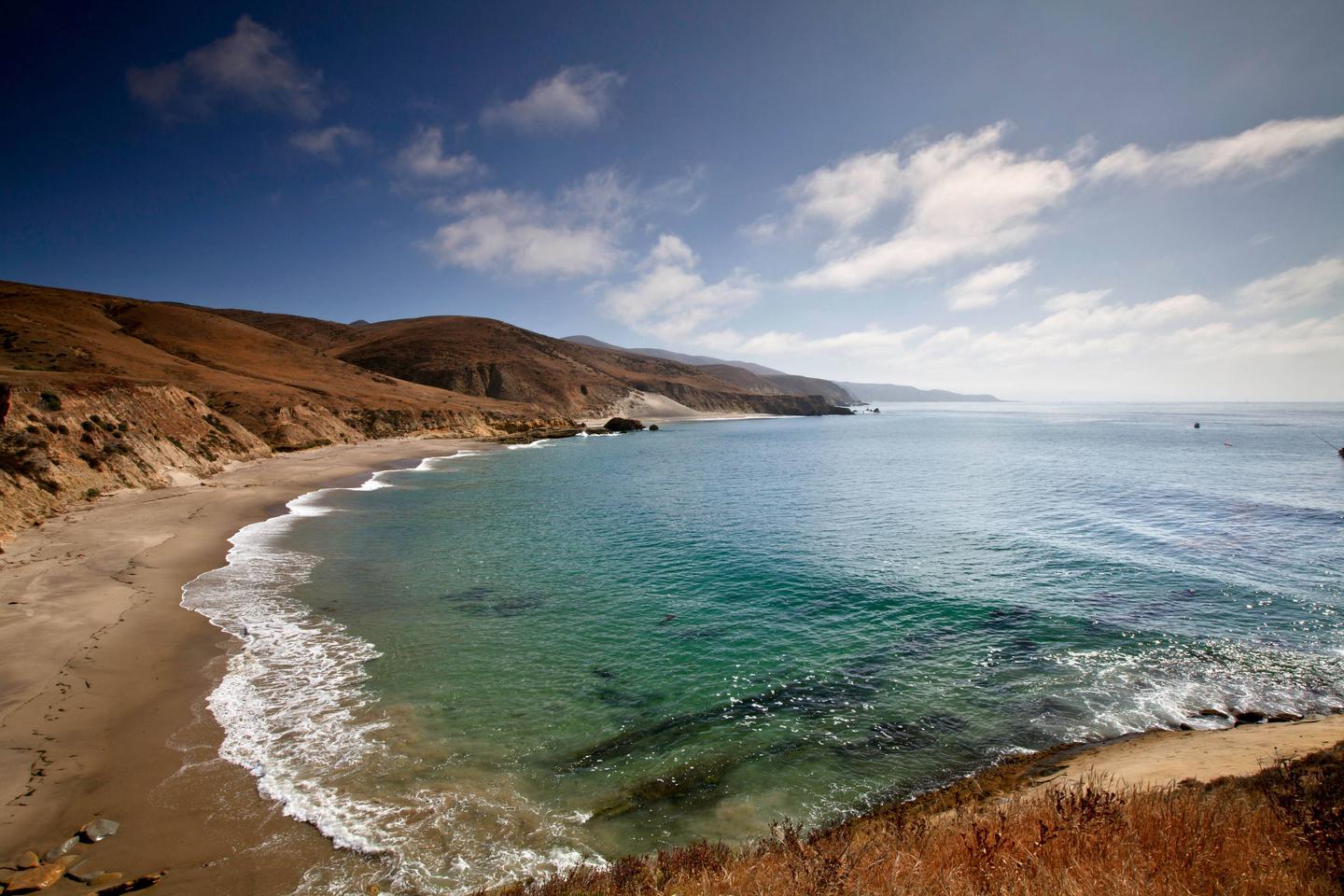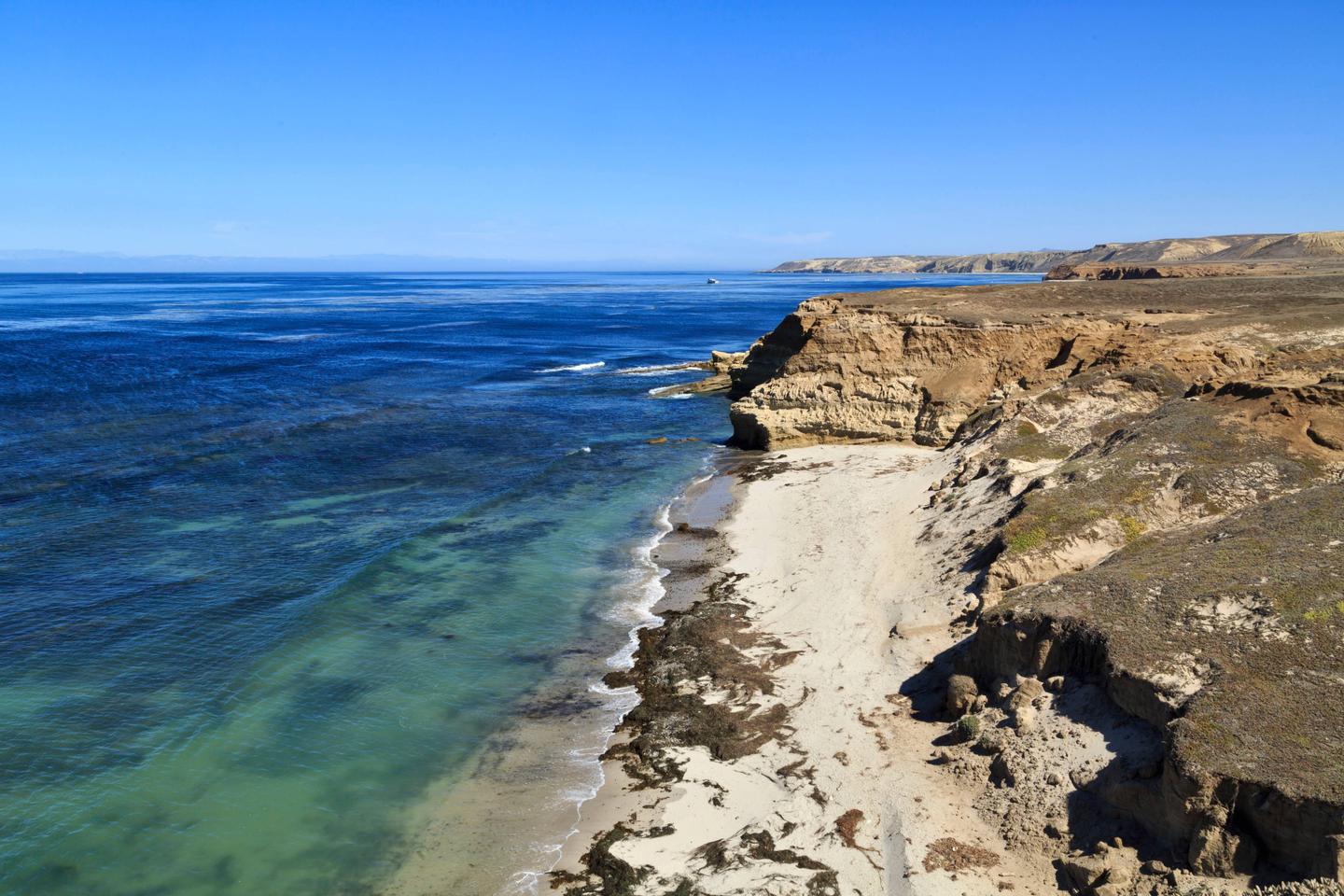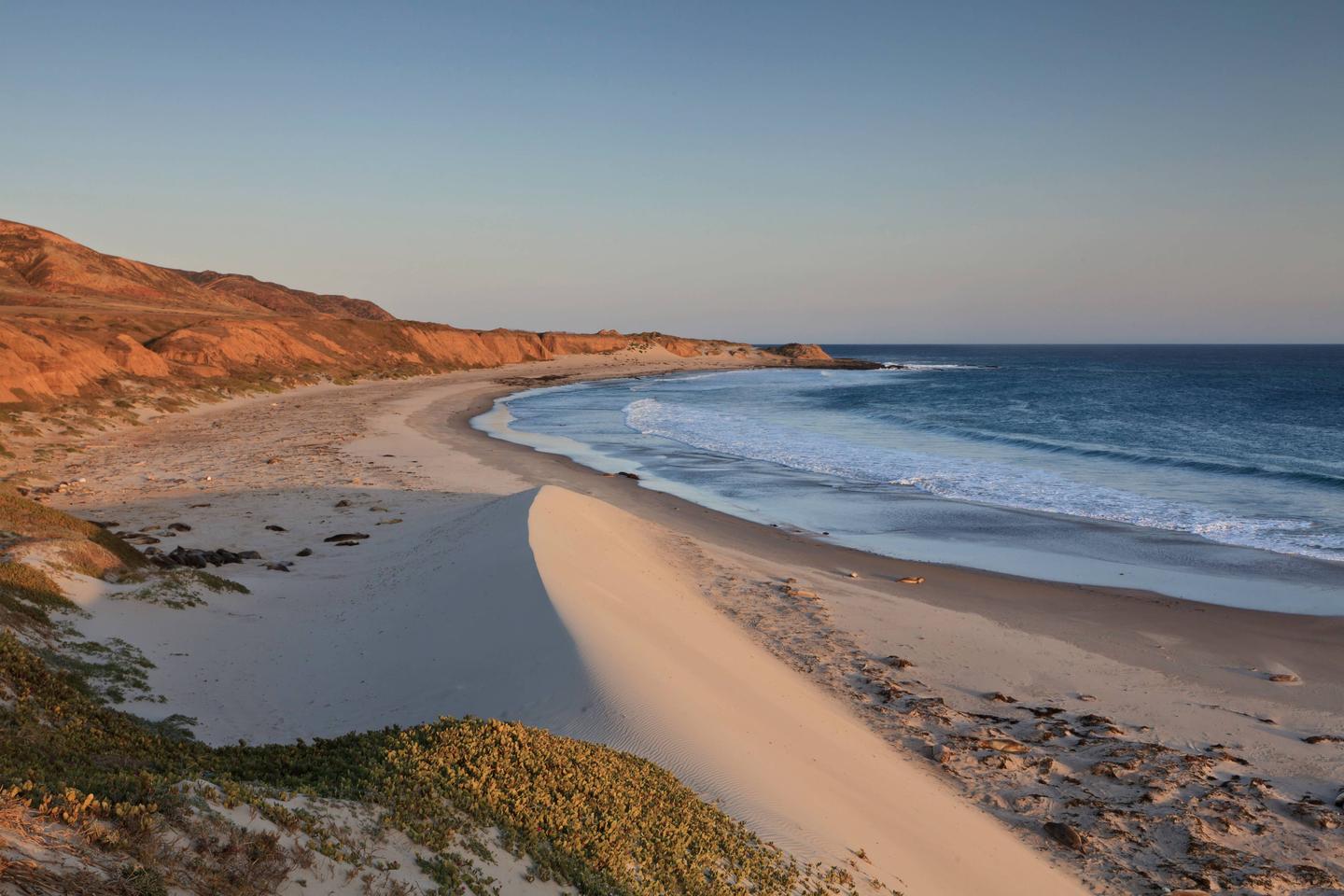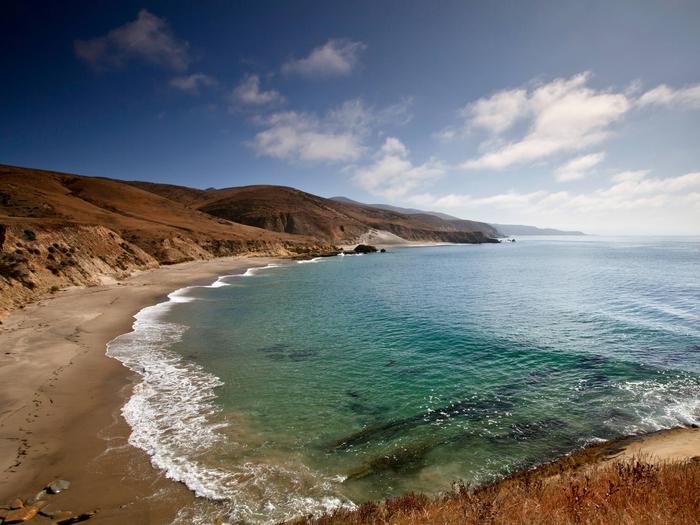Overview
Great Facilities and Amenities
Checkin Time
(Majority of the campsites have 11:00 am)
Checkout Time
(Majority of the campsites have 11:00 am)
Hike In Distance To Site
(Up to 10.0mi)
Max Num Of People
(Up to 20)
Site Access
(Majority of the campsites have hike in)
Natural Features




Weather
Weather conditions are generally best from August through October, with relatively calm wind and sea conditions and virtually no rain. Backpackers and kayakers should be prepared for strong northwest winds throughout the year, with the possibility of strong east or Santa Ana winds from October through January. The average wind speed is 15 knots, although speeds of 40 to 50 knots are not uncommon. Occasionally, the south side of the island (South Point to East Point) offers protection from these strong winds. Dense fog is common making chart and compass navigation mandatory. For the most current weather forecast, please visit Channel Islands National Marine Sanctuary's Internet Weather Kiosk .
Ocean Conditions
Kayakers may encounter strong ocean currents around the islands. Intense wave and surf conditions exist around the Carrington Point area. Sheer cliffs rise out of the ocean, reflecting incoming waves back out to sea, creating a washing machine effect. In this turbulent area there are no places to land, even in an emergency. The first landable beach is Lobo Canyon, five miles west of the ranch area pier. Rounding Skunk Point may be tricky as well because of merging currents. The wind often increases in the afternoon, and the prevailing northwesterlies can make paddling back to Water Canyon difficult. During the summer months, large swells often pound the south side of the island, making landing and launching from the beaches extremely challenging, requiring advanced skills. Ocean water temperatures range from the lower 50s (F) in the winter to the upper 60s (F) in the fall.
Recreation


Boat and Airplane Drop Off Points. The park boat concessionaire, Island Packers, usually drops off and picks up kayakers and backpackers at the pier near the ranch area in Bechers Bay. The park airline concessionaire, Channel Islands Aviation, drops hikers at the end of the airstrip near Water Canyon, approximately one mile from the pier and a 1/2 mile from the frontcountry campground in Water Canyon.Trail Conditions. Hiking to beach camping areas is along the beach, dirt roads, or unmaintained paths created by island animals. These roads and paths are rugged and mountainous with no signs.
Maps. Please refer to topographical maps for more accurate mileage and to help with the following descriptions. It is recommended that all backpackers purchase topographic maps (USGS 7.5 minute maps or the Trails Illustrated map of all the islands) and kayakers purchase nautical charts before departing on their journey.
Hiking and Kayaking Distances. All distances that follow are approximate and measured in miles from the pier, unless stated. Please see Hiking Santa Rosa Island for descriptions of other hikes on Santa Rosa Island.
Southeast Quadrant
- East Point: 7 mi (11 km) hiking; 8 mi (13 km) kayaking*
- East Point to Ford Point: 8 mi (13 km) hiking; 5 mi (8 km) kayaking**
- Ford Point via South (Wreck) Road: 9 mi (14.5 km) hiking+
- Ford Point to Johnsons Lee: 4 mi (6.5 km) hiking; 3.5 (6 km) kayaking+
- Johnsons Lee (via East Point): 18 mi (29 km) hiking; 16 mi (26 km) kayaking**
- Johnsons Lee via Main (Soledad) Road: 14 mi (22.5 km) hiking+
- Johnsons Lee via South (Wreck) Road: 13.5 mi (22 km) hiking+
- La Jolla Vieja via South (Wreck) Road: 11.2 mi (18 km) hiking+
* Camping Just South of East Point is NOT Recommended. While no camping is allowed at East Point, there is a small pocket beach just to the south in the Southeast Quadrant that is open to camping between August 16 and September 15. However, it is not recommended for camping as this beach is very, small and may be washed out at higher tides. In addition, pounding surf and strong winds constantly reshape this beach.
** Hiking Beyond East Point. If hiking beyond East Point to Ford Point, it is recommended that you follow the ridge line or road until you reach the northeast ridge of San Augustine Canyon. Follow this ridge down to the mouth of the canyon. Hiking along the beach from East Point to Ford Point is impossible due to section of vertical cliffs that drop directly into the ocean. However, kayakers can access beaches throughout this area. Once hikers reach Ford Point, they may follow the low terrace or higher ridge (both eventually run into a coastal road) down to the Johnsons Lee area. Refer to topographical maps for more information.
+ Direct access to beaches between Johnsons Lee and Ford Point (including La Jolla Vieja) is also possible via the Main (Soledad) or South (Wreck) roads. Both of these routes are long hikes and with a considerable amount of climbing and, once again, like all hiking or kayaking on the island, is recommended only for the experienced, well-conditioned traveler.
Southwest Quadrant
Backcountry camping in the Southwest quadrant is extremely difficult and only recommended for experienced backpackers due to long distances, frequent high winds, and lack of reliable water sources.
- China Camp Beach (closest beach in Southwest Quadrant): 13 MI (21 km) hiking; 25 mi (40 km) kayaking.
Northwest Quadrant
Backcountry camping in the Northwest quadrant is extremely difficult and only recommended for experienced backpackers due to long distances, frequent high winds, washed-out beaches at high tides, and lack of reliable water sources.
- Dry Canyon: 10 mi (16 km) hiking; 11 mi (17.7 km) kayaking++
++Beginning September 16, the closest beach camping is Cow Canyon. However, this beach can wash out at high tide and/or large swell and is NOT recommended. Nearby Lobo Canyon beach is closed to beach camping and only available for day use. Therefore, Dry Canyon is the closest beach in the Northwest Quadrant that is recommended for camping.
Permitted Equipment
tent-N/A
